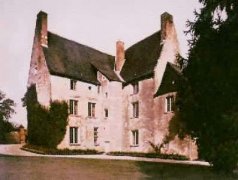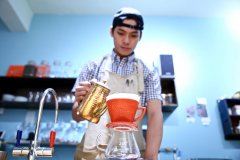The extraction principle of Smart Cup the use skills and flavor characteristics of smart cup
For professional baristas, please follow the coffee workshop (Wechat official account cafe_style)
"Sorry, today is the first time for our shop to make boutique coffee from smart cups. My target TDS is 1.3, and this one is only 1.28. I will now refund one pound as compensation. "Jeremy, a barista at Prufrock in London, said sheepishly. The author not only did not accept that pound, but also paid for another cup, hoping to take the opportunity to find out why this famous international coffee shop chose this method.
Extraction mode is carried out by soaking.
In fact, water accounts for more than 98% of each drop of coffee. The American Fine Coffee Association used to quantify the concentration of total dissolved solids (TDS, total dissolved solids) measured by an optical refractometer. If less than 1% of a cup of coffee comes from beans, our taste will be considered too light. On the contrary, if the content is higher than 2%, it will generally feel too strong. The differences between nationality and taste are reflected in the concentration standards of different boutique associations. In the United States, it is between 1.2% and 1.4%; Nordic people have a heavier taste and prefer a concentration of between 1.3% and 1.5%.
In the British coffee industry, it seems that the "smart cup" is hot. Over the past few months, the author has met different British baristas using this tool invented by the Taiwanese to make coffee. The so-called "smart cup" is a funnel with a valve embedded in the bottom. After the general coffee funnel is injected with water, the coffee liquid will drop from the other end in a very short time, "in and out". The essence of hand-brewed coffee is to systematically extract the flavor of coffee by using the resistance formed by the ground, sand-thin coffee powder (coffee bed) through the technique of water injection. Although the smart cup looks like a funnel, its extraction mode is actually full immersion, which will not be affected by water flow and other factors. Unlike the French press, at the end of the extraction process, the coffee oil and fine powder in the coffee liquid will first pass through the filter paper before flowing out through the open valve. It tastes cleaner and more layered than the pressure kettle with metal mesh to "separate the slag".

"you used to drink this Rwandan coffee in your hometown, so you might as well try my gesture. I want to cook it in a smart cup, because using this method to extract coffee, sweetness and sweet taste are the most prominent! "
The level of cooking is like the depth of field.
During the long Christmas holiday, the store gathered friends from all over the world. These include shopkeepers who have set up shops in Australia and come to Hong Kong as a result of the growing popularity of hand-brewed coffee, experienced baristas from New Zealand and enthusiasts who have settled on the east coast of the United States, but do not hesitate to fly back and forth once a week because of the taste of coffee on the west coast. One of the ticklers is a coffee instructor from Bafu County, England. Some of the guests in the store had the privilege of sharing the coffee he made.
"there is an in-and-out method of hand brewing, which is the same as soaking and stewing coffee and measuring the TDS. Why is the taste different?. "the young man tried to drink while he was busy taking pictures.
The art pursued by Eastern food culture is very different from that of the West in terms of scientific quantification. just like "arrogance", foreign friends cannot understand it. When exchanging boutique coffee in Hong Kong and Taiwan, we will describe the taste in segments. Like listening to a concert, different instruments rise and fall one after another, and the music is melodious. Some of these changes come from coffee itself, but also from temperature changes. After drinking for a long time, I began to know how to distinguish the effects of cooking gestures. If the soaking method is not controlled properly, it can easily lead to the saturation of the extraction components and the reduction of the sense of hierarchy. It's like the band's piano, flute and cello are playing together, making a noise.
I looked at his long-lost film camera and said, "TDS is like exposure." If the amount of coffee powder is an aperture, the size of the powder is the shutter. Different combinations of the two can make the photo exposure accurate. But the level of cooking we pursue, like depth of field, is more complex than the standard. "
Important Notice :
前街咖啡 FrontStreet Coffee has moved to new addredd:
FrontStreet Coffee Address: 315,Donghua East Road,GuangZhou
Tel:020 38364473
- Prev

Introduction to the characteristics of baratza 270baratza 270Bean Mill recommended for domestic Bean Mill
Exchange of professional baristas Please follow the Coffee Workshop (official Wechat account cafe_style) the new Sette 270grinder from Baratza is the future of household coffee grinders. We are pleased to launch this new series of tapered burrs and a revolutionary new grinding technology. This technology has been designed and perfected in Liechtenstein for eight years and is established in terms of simplicity, efficiency and durability.
- Next

Experience of Sanyo Youtianshao ceramic filter cup the concept and unique design of Sanyo filter cup by hand
Professional coffee knowledge exchange more coffee bean information please follow the coffee workshop (Wechat official account cafe_style) hand coffee filter cup knowledge! Flow rate data of several common coffee filter cups thanks to the owner Jian Shiwei, who is also a bean baker, is willing to share with us his experience on the use of ceramic filter cups in Sanyo Youtian, and leads the beginners who want to step into the field of hand-brewed coffee.
Related
- What is the Philharmonic pressure? How to use Philharmonic pressure to make delicious coffee
- Why does a hand grinder have more fine powder than an electric grinder?
- In addition to the hot mom, what is the difference between the versions of EK43 | ditting and Mahdi ek43?
- What kind of equipment do you need to make coffee by hand? Introduction to novice starter cooking equipment tools
- Espresso needs to be ground how thick and thin scale entry Italian Coffee Machine Bean Grinder investigation and Grinding course
- How much does it cost to open a small private cafe? How much does it cost to learn coffee? How to operate it?
- The difference between the flavor characteristics of hand-brewed coffee and coffee maker is hand-brewed coffee really better than coffee maker? Can I use a coffee machine to make coffee beans by hand?
- The difference between 01 and 02 of hario v60 filter cup what is the difference between 01 and 02 filter cup opening and cooking flavor
- What's the difference between the smart cup and the French kettle? Which is better, the French kettle or the Smart Cup?
- What's the difference between a smart cup and a V60 filter cup? The difference between the taste of smart cup and hand-brewed coffee

